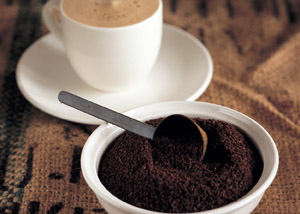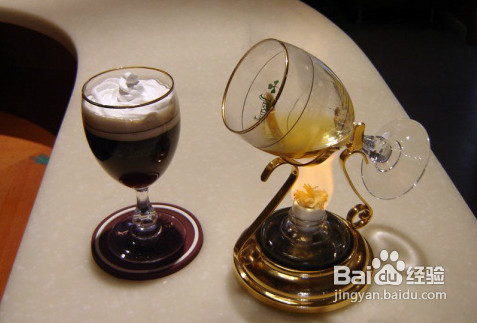What are the four types of coffee trees, coffee trees and their characteristics
Arabica species
The shape of the bean is small, the front is long oval, the middle crack is narrow and tortuous, and the arc on the back of the bean is flat.
Arabica coffee is grown in Brazil and Colombia in South America, Central America, Costa Rica in the Caribbean, Guatemala, Jamaica, Mexico and Ethiopia. Arabica coffee beans are large, uniform in size and glossy in color. Coffee beans that are generally familiar to everyone, such as Santos in Brazil, Mantenin in Sumatra, Yemenmoka and the Blue Mountains in Jamaica, are all high-quality coffee beans grown in Arabica.
Arabica coffee is more difficult to grow, they like mild days and colder nights, too cold, too hot, too humid climate can be fatal to it. Coffee trees in Arabica need to be planted on sloping slopes at high altitude. they grow luxuriantly in the highlands (600-1800 meters) and require special climatic conditions-the average temperature throughout the year is about 20 degrees Celsius and there is plenty of rainfall without frost. Only more than 50 countries in the world have such conditions, all of which are about 160 kilometers north and south of the equator. Its harvesting must be carried out manually, which is more difficult. However, due to the excellent aroma, balanced taste and low caffeine content of Arabica coffee beans, the actual planting amount accounts for about 70% of the total coffee planting.
The caffeine content of Arabica is relatively low, which is only about half of that of Robasta, so its price is higher.
Robasta species
The bean shape is larger, the front is gradually round, the back is round and convex, and the crack is straight.
Robasta coffee trees are native to Madagascar in central and western Africa and Indonesia in Asia, and account for about 20% to 30% of the world's output. Robasta coffee tree is suitable for planting in the lowlands below 500 meters above sea level, has strong adaptability to the environment, can resist bad climate, resist diseases and insect pests, and does not need much artificial care during soil preparation, weeding and pruning. It can be allowed to grow in the wild, and it is a kind of coffee tree that is easy to cultivate. But its finished product tastes more bitter than Arabica, its caffeine content is higher, and its quality is much lower, so it is mostly used to make instant (instant) coffee. Since it is mainly produced in Africa, most Africans drink robastian coffee.
Liberian species
The Liberian species, the large-grained species, is native to Liberia in Africa, as well as a few countries such as Malaysia. Its cultivation history is slightly shorter than the other two coffee trees. Liberian coffee trees are suitable for growing in lowlands. Its trunk is high and strong, it is 18 meters high, its leaves are large and tough, and its fruits and coffee beans are also very large. Its seed coat is close to the seed kernel and is scarlet when it is mature. The quoted flavor is strong, the caffeine content is medium, the irritation is strong, and the quality is poor. Because of its unique taste, low demand and small cultivation face value, it produces less than 5% of the world's coffee production.
There are more than 6000 species of coffee trees, most of which are tropical trees and shrubs. There are four main coffee trees in the world, of which only two are of real commercial value and are planted in large quantities, and the quality of the coffee beans produced by other coffee trees is also higher than that of other coffee trees.
The first is Arabica beans, which account for 70% of the world's output. The world-famous Blue Mountain Coffee and Mocha Coffee are almost all Arabica. The other is the Robasta species, which is native to the Congo in Africa and accounts for about 20% to 30% of the world's output. Different varieties of coffee beans have different tastes, but even the same varieties of coffee trees have their own unique flavor due to the influence of different soil and climate. The other two species are Liberian species and Esselsa species.

Important Notice :
前街咖啡 FrontStreet Coffee has moved to new addredd:
FrontStreet Coffee Address: 315,Donghua East Road,GuangZhou
Tel:020 38364473
- Prev

Introduction of high-quality coffee beans
Robusta is mostly used to make instant coffee because of its poor quality. Liberica is seldom mentioned because of its quality and low yield. The unique flavor of coffee is irresistible; the unique flavor is loved by everyone; now let's make a brief introduction to the main coffee beans: MOCHA editors currently take the coffee produced in Yemen as the best, followed by Ethiopia's mocha.
- Next

What are the main varieties of coffee beans
The Robastian coffee tree, which originated in the Congo in Africa, accounts for about 20% to 30% of the world's production. Luoba Jinta coffee tree is suitable for planting in the lowlands below 500 meters above sea level, has a strong adaptability to the outside world, can resist bad weather, resist diseases and insect pests, and is in soil preparation. Weeding and pruning do not require much manual care, and can be allowed to grow in the wild, which is easy.
Related
- Does Rose Summer choose Blue, Green or Red? Detailed explanation of Rose Summer Coffee plots and Classification in Panamanian Jade Manor
- What is the difference between the origin, producing area, processing plant, cooperative and manor of coffee beans?
- How fine does the espresso powder fit? how to grind the espresso?
- Sca coffee roasting degree color card coffee roasting degree 8 roasting color values what do you mean?
- The practice of lattes: how to make lattes at home
- Introduction to Indonesian Fine Coffee beans-- Java Coffee producing area of Indonesian Arabica Coffee
- How much will the flavor of light and medium roasted rose summer be expressed? What baking level is rose summer suitable for?
- Introduction to the characteristics of washing, sun-drying or wet-planing coffee commonly used in Mantenin, Indonesia
- Price characteristics of Arabica Coffee Bean Starbucks introduction to Manning Coffee Bean Taste producing area Variety Manor
- What is the authentic Yega flavor? What are the flavor characteristics of the really excellent Yejasuffi coffee beans?

